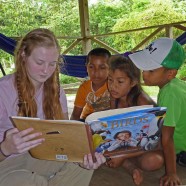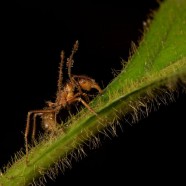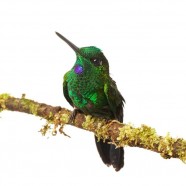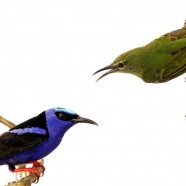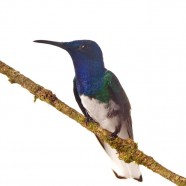Cocobolo Nature Reserve Education
Our tropical field season is coming to an end and, even though it is snowing outside in Jamestown right now, we are gearing up for field work here. The latest findings from our work in Panama and Costa Rica will be revealed soon as we work through data. but I can tell you already that there is all sorts of exciting news to report on. In the mean time, I wanted to share this picture, taken by Laurie Doss, during a February trip to Cocobolo Nature Reserve with students and staff of the Marvelwood School in Connecticut. Not only were the students actively involved in monitoring and banding...
Read MoreZombie Ant
This is a real life zombie, a tropical ant species infected by a cordycep fungus. The fungus infects the ant, who then walks around like a zombie until it finds the perfect perch to die on. The ant usually bites the base of a leaf and dies, the fungus then sprouting out a storma, eventually casting a spray of spores in that area to infect the next line of victims. Photographed by RTPI Affiliate Sean Graesser in Costa Rica while on assignment for the Roger Tory Peterson Institute of Natural History.
Read MoreGreen-crowned Brilliant (Heliodoxa jacula)
Here is the Green-crowned Brilliant (Heliodoxa jacula), a large hummingbird commonly found at higher elevations in Costa Rica. It can be seen on edge clearings and in the forest, protecting certain feeding plants. This is an adult male, as juveniles usually have a mix of green and white plumage with a orange gorget. It turns purple as it ages, and as you can see by the full purple gorget this is indeed an adult male. Photographed by RTPI Affiliate Sean Graesser for the Meet Your Neighbours global biodiversity project in Costa Rica while on assignment for the Roger Tory Peterson Institute of...
Read MoreRed-legged Honeycreeper (Cyanerpes cyaneus)
Here we have the vibrant male and subtle female Red-legged Honeycreeper (Cyanerpes cyaneus). You can see the contrast in plumage between the breeding male and green female, and non-breeding and juvenile males also have green plumage. It is a common species in mixed feeding flocks on forest edges. Photographed by RTPI Affiliate Sean Graesser for the Meet Your Neighbours global biodiversity project in Costa Rica while on assignment for the Roger Tory Peterson Institute of Natural History.
Read MoreWhite-necked Jacobin (Florisuga mellivora)
The White-necked Jacobin (Florisuga mellivora) is one of the most uniquely colored hummingbird species in Central America. The adult males have this beautiful blue bib that has a splendid sheen to it. They can be found in many different habitat types making it an especially interesting species to study. Photographed by RTPI Affiliate Sean Graesser for the Meet Your Neighbours global biodiversity project in Costa Rica while on assignment for the Roger Tory Peterson Institute of Natural History.
Read More



